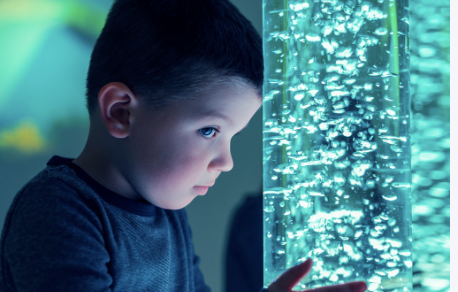We found 287 results that contain "deleting a region of dna or adding a new segment"
Posted on: #iteachmsu


Posted by
over 4 years ago
Scientists found that 6.1 million children aged 2-17 years living in the U.S. had been diagnosed with attention-deficit/hyperactivity disorder (ADHD), which is similar to previous estimates.
Ages 2-5: Approximately 388,000 children
Ages 6-11: Approximately 2.4 million children
Ages 12-17: Approximately 3.3 million children
Ages 2-5: Approximately 388,000 children
Ages 6-11: Approximately 2.4 million children
Ages 12-17: Approximately 3.3 million children
Posted on: #iteachmsu



Posted by
over 1 year ago

What I Did To Stimulate My Child’s Brain Activity
1. Communicate With Them
I used to talk to my daughter continuously (right from her birth won’t be an exaggeration). I used to label every action I was doing, right from standing up, sitting down, singing, cooking, etc. I also marked every object she was looking at like door, plate, stroller, shoes; feeling- like the wind, heat, cold; tasting- like sour, sweet, salty, etc. So, by the time she was nine months old, she had a good vocabulary, a good grasp of all the activities people did around her and understood different tastes.
2. Introduce Books, Storytelling And Narration
Books play a vital role in both brain development and language skills. They’re also the first step towards gross motor skill development (holding books, turning pages). I had introduced cloth books & soft sponge books to her when she was two months old, board books from five months, and paper books after she turned a year old. She liked colourful objects, animals, birds & shapes till around nine months and then loved listening to simple short stories from illustrated books (no fairy tales). And activity books (match the shadows, pairing similar objects) after she turned 2.
3. Ask Questions To Stimulate The Thinking Process
As I introduced the books, I named the objects she was seeing in all the languages I knew. Then I gradually started describing them (shape, colour, use). I explained the environment in which they are found and constantly asked her questions. For example, pointing at a rabbit, instead of asking “what is this?” I asked her, “it has long ears, a short fluffy tail, is soft & white like cotton. What is it?”. I continued with the exercise even when we went out to some shop or mall. We played the “I spy” game in the house & outdoors. I would describe objects and ask her to identify them. It was fun.
4. Let Your Kids Explore - Touch, Feel, Smell, Taste
I encouraged the natural tendency that kids have to explore the world around them. (But of course, with discretion). I never stopped her from playing with stones or mud in the garden, things like tasting sour lime or bitter gourd, smell a flower on the plant, etc. She learned by herself that stones were hard, mud was soft, ice was cold, the paper could be torn with hands and rubber bands were elastic & so on. Things that were not safe for her we explained to her & kept out of reach- like touching a hot cup of tea could burn her skin, pressing against a glass door could break the glass, playing with a sharp object could hurt, etc.
5. Music-Dance-Physical Activity
Kids love music & I was not surprised the other day when she sang the whole song “lakdi ki kathi, kathi pe ghoda” and danced to the tune as well. She now sings quite a few songs & rhymes. It seems like she has a good ear for music because she has been listening to it since childhood. I also noticed that a soothing instrumental piece calms her down whereas a song like “lungi dance” excites her. So, dance becomes an excellent physical activity to channelise the never-ending energy of a kid, and singing & listening to songs becomes a great mental activity.
6. Building Event Memory, Associating Things & Situations
Kids these days use their smartphones very dexterously, and photos are their favourite part. Although I have limited her total gadget time (phone, iPad, TV) to 30-45 minutes, I make good use of the photos she sees to build her event memory. Whenever she sees some old photos, I describe to her the event. I tell her who all were present, which places we had visited, etc. After several repetitions, this activity has helped her build a memory of past events. She also recognises people from the photos even if she meets them after a long time. She has learned to associate certain things with specific events like lanterns with Diwali or Santa Claus with Christmas.
7. Independence
It was okay if she initially spilt a little food or water on the table, but she learned to hold her spoon & cup. It took a lot of time to wear shoes, most of the time, she put them on the wrong feet, but now she wears them perfectly. Kids figure out things themselves, and we need not tell them how to do it. We need to give them some time. I am happy my child eats independently, combs her hair, brushes her teeth, & wears her shoes. I always encouraged her to do these simple activities even if they were time-consuming initially and she couldn’t do them at all.
8. Age-Appropriate Toys, Art, And Craft
Use age-appropriate toys like building blocks, push & go toys, insert shapes in slots for gross motor skills development. Some simple paper-folding art, glueing stickers on papers, colouring can also help refine motor skills.
9. Logical Reasoning & Decision Making
Kids think logically, and we just have to encourage this to stimulate their brain activity and enhance their thinking process. I always try to reason things for her (wherever possible). And she has developed the same habit. I make her choose between two things at times- simple things like which dress she wants to put on or which game she wants to play- the decision-making is a good brain stimulator.
10. The Most Important - Excellent Nutrition
Good food is a key to good development and a good mood as well. A healthy body nurtures a healthy mind. Fortunately, my daughter is not a picky eater but there are days when she gives me a hard time.
A balanced nutritious diet is essential. Vegetables, seasonal fruits, eggs, pulses are all building blocks for a proper diet. Milk with #Junior Horlicks is also a great choice as it includes nutrients that support brain development, such as choline, iron, and iodine. It also contains nutrients that support physical growth, such as calcium, Vitamin D, Vitamin K, and proteins, and also nutrients to support healthy immune function such as Vitamin E, A, Selenium & Copper. You can design a wholesome diet with roti, rice, whole-grain bread, wheat pasta, curd, cheese and maybe a scoop of ice cream and some sweets once in a while.
1. Communicate With Them
I used to talk to my daughter continuously (right from her birth won’t be an exaggeration). I used to label every action I was doing, right from standing up, sitting down, singing, cooking, etc. I also marked every object she was looking at like door, plate, stroller, shoes; feeling- like the wind, heat, cold; tasting- like sour, sweet, salty, etc. So, by the time she was nine months old, she had a good vocabulary, a good grasp of all the activities people did around her and understood different tastes.
2. Introduce Books, Storytelling And Narration
Books play a vital role in both brain development and language skills. They’re also the first step towards gross motor skill development (holding books, turning pages). I had introduced cloth books & soft sponge books to her when she was two months old, board books from five months, and paper books after she turned a year old. She liked colourful objects, animals, birds & shapes till around nine months and then loved listening to simple short stories from illustrated books (no fairy tales). And activity books (match the shadows, pairing similar objects) after she turned 2.
3. Ask Questions To Stimulate The Thinking Process
As I introduced the books, I named the objects she was seeing in all the languages I knew. Then I gradually started describing them (shape, colour, use). I explained the environment in which they are found and constantly asked her questions. For example, pointing at a rabbit, instead of asking “what is this?” I asked her, “it has long ears, a short fluffy tail, is soft & white like cotton. What is it?”. I continued with the exercise even when we went out to some shop or mall. We played the “I spy” game in the house & outdoors. I would describe objects and ask her to identify them. It was fun.
4. Let Your Kids Explore - Touch, Feel, Smell, Taste
I encouraged the natural tendency that kids have to explore the world around them. (But of course, with discretion). I never stopped her from playing with stones or mud in the garden, things like tasting sour lime or bitter gourd, smell a flower on the plant, etc. She learned by herself that stones were hard, mud was soft, ice was cold, the paper could be torn with hands and rubber bands were elastic & so on. Things that were not safe for her we explained to her & kept out of reach- like touching a hot cup of tea could burn her skin, pressing against a glass door could break the glass, playing with a sharp object could hurt, etc.
5. Music-Dance-Physical Activity
Kids love music & I was not surprised the other day when she sang the whole song “lakdi ki kathi, kathi pe ghoda” and danced to the tune as well. She now sings quite a few songs & rhymes. It seems like she has a good ear for music because she has been listening to it since childhood. I also noticed that a soothing instrumental piece calms her down whereas a song like “lungi dance” excites her. So, dance becomes an excellent physical activity to channelise the never-ending energy of a kid, and singing & listening to songs becomes a great mental activity.
6. Building Event Memory, Associating Things & Situations
Kids these days use their smartphones very dexterously, and photos are their favourite part. Although I have limited her total gadget time (phone, iPad, TV) to 30-45 minutes, I make good use of the photos she sees to build her event memory. Whenever she sees some old photos, I describe to her the event. I tell her who all were present, which places we had visited, etc. After several repetitions, this activity has helped her build a memory of past events. She also recognises people from the photos even if she meets them after a long time. She has learned to associate certain things with specific events like lanterns with Diwali or Santa Claus with Christmas.
7. Independence
It was okay if she initially spilt a little food or water on the table, but she learned to hold her spoon & cup. It took a lot of time to wear shoes, most of the time, she put them on the wrong feet, but now she wears them perfectly. Kids figure out things themselves, and we need not tell them how to do it. We need to give them some time. I am happy my child eats independently, combs her hair, brushes her teeth, & wears her shoes. I always encouraged her to do these simple activities even if they were time-consuming initially and she couldn’t do them at all.
8. Age-Appropriate Toys, Art, And Craft
Use age-appropriate toys like building blocks, push & go toys, insert shapes in slots for gross motor skills development. Some simple paper-folding art, glueing stickers on papers, colouring can also help refine motor skills.
9. Logical Reasoning & Decision Making
Kids think logically, and we just have to encourage this to stimulate their brain activity and enhance their thinking process. I always try to reason things for her (wherever possible). And she has developed the same habit. I make her choose between two things at times- simple things like which dress she wants to put on or which game she wants to play- the decision-making is a good brain stimulator.
10. The Most Important - Excellent Nutrition
Good food is a key to good development and a good mood as well. A healthy body nurtures a healthy mind. Fortunately, my daughter is not a picky eater but there are days when she gives me a hard time.
A balanced nutritious diet is essential. Vegetables, seasonal fruits, eggs, pulses are all building blocks for a proper diet. Milk with #Junior Horlicks is also a great choice as it includes nutrients that support brain development, such as choline, iron, and iodine. It also contains nutrients that support physical growth, such as calcium, Vitamin D, Vitamin K, and proteins, and also nutrients to support healthy immune function such as Vitamin E, A, Selenium & Copper. You can design a wholesome diet with roti, rice, whole-grain bread, wheat pasta, curd, cheese and maybe a scoop of ice cream and some sweets once in a while.
Posted on: #iteachmsu


Posted by
over 4 years ago
Students usually are identified only after consistently demonstrating a failure to understand or follow rules or to complete required tasks.
Other common reasons for referral include frequent classroom disruptions and poor academic performance.
Studies found that students with ADHD, compared to students without ADHD, had persistent academic difficulties that resulted in the following: lower average marks, more failed grades, more expulsions, increased dropout rates, and a lower rate of college undergraduate completion (Weiss & Hechtman as cited in Johnston, 2002; Ingersoll, 1988).
Other common reasons for referral include frequent classroom disruptions and poor academic performance.
Studies found that students with ADHD, compared to students without ADHD, had persistent academic difficulties that resulted in the following: lower average marks, more failed grades, more expulsions, increased dropout rates, and a lower rate of college undergraduate completion (Weiss & Hechtman as cited in Johnston, 2002; Ingersoll, 1988).
Posted on: #iteachmsu


Posted by
almost 5 years ago
Post 2 https://www.lipsum.com/ Why do we use it? It is a long established fact that a reader will be distracted by the readable content of a page when looking at its layout. The point of using Lorem Ipsum is that it has a more-or-less normal distribution of letters, as opposed to using 'Content here, content here', making it look like readable English. Many desktop publishing packages and web page editors now use Lorem Ipsum as their default model text, and a search for 'lorem ipsum' will uncover many web sites still in their infancy. Various versions have evolved over the years, sometimes by accident, sometimes on purpose (injected humour and the like).
Posted on: #iteachmsu



Posted by
almost 5 years ago

https://moz.com/blog/absolute-beginners-guide-to-google-analytics
Why you need Google Analytics Do you have a blog? Do you have a static website? If the answer is yes, whether they are for personal or business use, then you need Google Analytics. Here are just a few of the many questions about your website that you can answer using Google Analytics.
Why you need Google Analytics Do you have a blog? Do you have a static website? If the answer is yes, whether they are for personal or business use, then you need Google Analytics. Here are just a few of the many questions about your website that you can answer using Google Analytics.
Navigating Context
Posted on: #iteachmsu


Posted by
over 4 years ago
The P21 framework emphasizes effective use of oral, written, and nonverbal communication skills for multiple purposes (e.g., to inform, instruct, motivate, persuade, and share ideas). It also focuses on effective listening, using technology to communicate, and being able to evaluate the effectiveness of communication efforts—all within diverse contexts (adapted from P21). Note that working in partners is a great way to collaborate or build shared understanding but a critical part of communication is sharing with an authentic audience.
Pedagogical Design
Posted on: #iteachmsu



Posted by
over 4 years ago

Many people without ADHD have marital problems, so a troubled marriage shouldn’t necessarily be seen as a red flag for adult ADHD. But there are some marriage problems that are likely to affect the relationships of those with ADHD. Often, the partners of people with undiagnosed ADHD take poor listening skills and an inability to honor commitments as a sign that their partner doesn’t care. If you’re the person with ADHD, you may not understand why your partner is upset, and you may feel you’re being nagged or blamed for something that’s not your fault 557
Posted on: #iteachmsu


Posted by
over 4 years ago
Dynamic time warping is an algorithm for measuring similarity between two sequences that may vary in time or speed. For instance, similarities in walking patterns would be detected, even if in one video the person was walking slowly and if in another he or she were walking more quickly, or even if there were accelerations and deceleration during the course of one observation. DTW has been applied to video, audio, and graphics – indeed, any data that can be turned into a linear representation can be analyzed with DTW.
Assessing Learning
